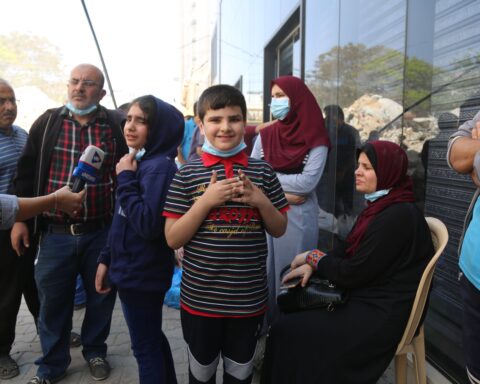The federal government recently released a statement that it was not slamming the door on unaccompanied male Syrian refugees, despite concerns after the government announced its resettlement plan on November 22. The plan stated that the government will prioritize the most vulnerable populations when resettling Syrian refugees.
According to Shauna Labman, Assistant Professor with the University of Manitoba’s law department, prioritizing vulnerable people, particularly refugees, is not exclusion and is not new.
“This focus on vulnerability is seen as a positive shift almost in our resettlement, resettling those most in need. So women and children have always been priority rankings for resettlement both under the United Nations High Commissioner for Refugees (UNHCR) prioritization of needs for resettlement and under Canada’s own policies,” she says.
She points out that if the government were to say there’s a peremptory exclusion of single men, that would be seen as gender discrimination and thus would be problematic.
“But I haven’t heard them say that. What they’re saying is prioritizing vulnerable refugees and families and that’s consistent with past Canadian policy and UNHCR prioritizations and so it’s a different thing,” says Labman. “What might get blurred is in the minuteness of the numbers.”
The most vulnerable groups
UNHCR has a handbook for resettlement that lists the most vulnerable groups, which include those who need legal or physical protection, survivors of torture, those with medical needs as well as women, girls, children and adolescents at-risk.
Family reunification and helping those who have a lack of alternative options are also considerations.
The general Syrian population falls into the last category. Women and children rank above the general Syrian population, according to the UNHCR handbook, explains Labman.
Jean McRae, Executive Director of the Inter-Cultural Association of Greater Victoria (ICA), agrees with Labman.
Women and children have always been priority rankings for resettlement.
McRae observes that the government’s announcement focuses on families, but not single men. She feels it’s tough for the men because in many cases, they are similarly vulnerable and at risk of being conscripted. Still, she understands the position that the government has taken.
“You have to go with the people who are vulnerable. I think it would be fair to say in terms of surviving winter in a refugee camp or a very precarious situation, the elderly and the young children are probably vulnerable,” says McRae.
Responding to public opinion and terrorism concerns
Laura Madokoro, Assistant Professor with McGill University’s Department of History and Classical Studies, sees that there’s always a push for government to do something to help refugees.
“The government thinks about of the broader social impact. They think about the immigration program as a whole,” says Madokoro.
However, she thinks that the Paris terrorist attacks had a psychological effect on the government, causing them to pay more attention to public opinion in Canada. Polls last month suggested that Canadians were divided on the merits of a quick resettlement before the end of December. Many cited security concerns.
“Everyone who identifies as Muslim gets painted with this terrorist brush.”
“Obviously the government has responded to that by reducing the numbers who are going to be coming by December and making this decision to privilege families over single men,” she says.
Debbie Douglas, the executive director with the Ontario Council of Agencies Serving Immigrants (OCASI), feels that because Syrian refugees are Muslims, they are associated with terrorism.
“Everyone who identifies as Muslim gets painted with this terrorist brush,” she says.
Discriminatory policies
Unlike McRae and Labman, Madoroko sees the government’s prioritization of women and children as discriminatory.
“I think that is unfortunate because the government is not leading. It is falling prey to what are security concerns, but it actually perpetuates the fear of the single man instead of saying if we do the proper screening, there’s nothing actually to be worried about. So in that respect, it’s a bit of unfortunate decision,” she says.
Madokoro says refugee selection has always been discriminatory in one way or another.
“There was a privileging that way [regarding demographics] and also privileging in terms of what kind of labour skills the Europeans had and whether or not they could adapt to the Canadian labour market,” says Madokoro.
In the 1950s there was a need for workers in Canada, she notes, so the government’s assistance for refugees and displaced people was connected to helping people who could contribute to the economy.
“So there is this history of privileging certain groups over others based on what is perceived as a national aid or national concern,” she says. “Obviously in the context in which we live today, security has become one of the primary factors the government consider.”
Florence Hwang is a Saskatchewan-based freelance writer. She is a media librarian who loves storytelling. She has written for La Source newspaper, CBC Saskatchewan, Saskatchewan Folklore and South Asian Post.





